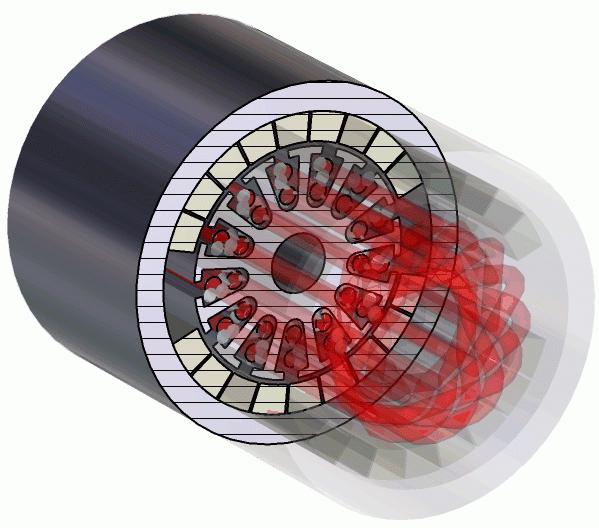A permanent magnet motor is an attempt to reduce the weight and overall dimensions of an electric machine, simplify its design, and increase reliability and ease of use. Such an engine allows and to significantly increase efficiency (efficiency ). He received the greatest distribution as a synchronous machine. In this device, permanent magnets are designed and used to create a rotating magnetic field.
At present, a combined version is used: permanent magnets together with electromagnets, along the coil of which a constant electric current flows. Such combined excitation provides many positive aspects: obtaining the required regulatory characteristics of the voltage and speed while reducing the excitation power, reducing the volume of the magnetic system (and, as a consequence, the cost of a device such as a combined permanent magnet motor) in comparison with the classical synchronous electromagnetic excitation system cars.
Today, the use of permanent magnets is possible in devices with a capacity of only a few kilovolt-amperes. However, permanent magnets with improved characteristics are being developed, and the power of the machines is gradually increasing.
A synchronous machine as a permanent magnet motor is used directly as a motor or generator in drives of various powers. Such devices have found application and distribution in mines, metallurgical plants, thermal stations. Since the synchronous motor operates with a variety of reactive power, it is used in refrigerators, pumps and other mechanisms with a constant speed. A permanent magnet electric motor is used in devices and devices of low power, where strict and accurate speed constancy is needed. These are automatic recording instruments, electric clocks, program control devices, etc. Special synchronous generators are installed at stations and substations, which generate only reactive power in idle mode. Such power is used for asynchronous motors, and synchronous machines of this type are called "compensators."

The principle of operation of a machine such as a permanent magnet motor, and, in particular, a synchronous motor, is based on the interaction of the magnetic field of the rotor (moving part) and the stator (fixed part).
Due to the interesting and still not fully studied properties of magnets, inventions based on them have often appeared and are appearing. For example, one of the most common ideas is to create such a device as a fuelless permanent magnet permanent magnet. From the point of view of modern science and physics, a perpetual motion machine is impossible (it would have to have a efficiency greater than unity, and this is considered unrealistic), but inventors in the field of alternative energy do not lose hope of creating and developing such a discovery.